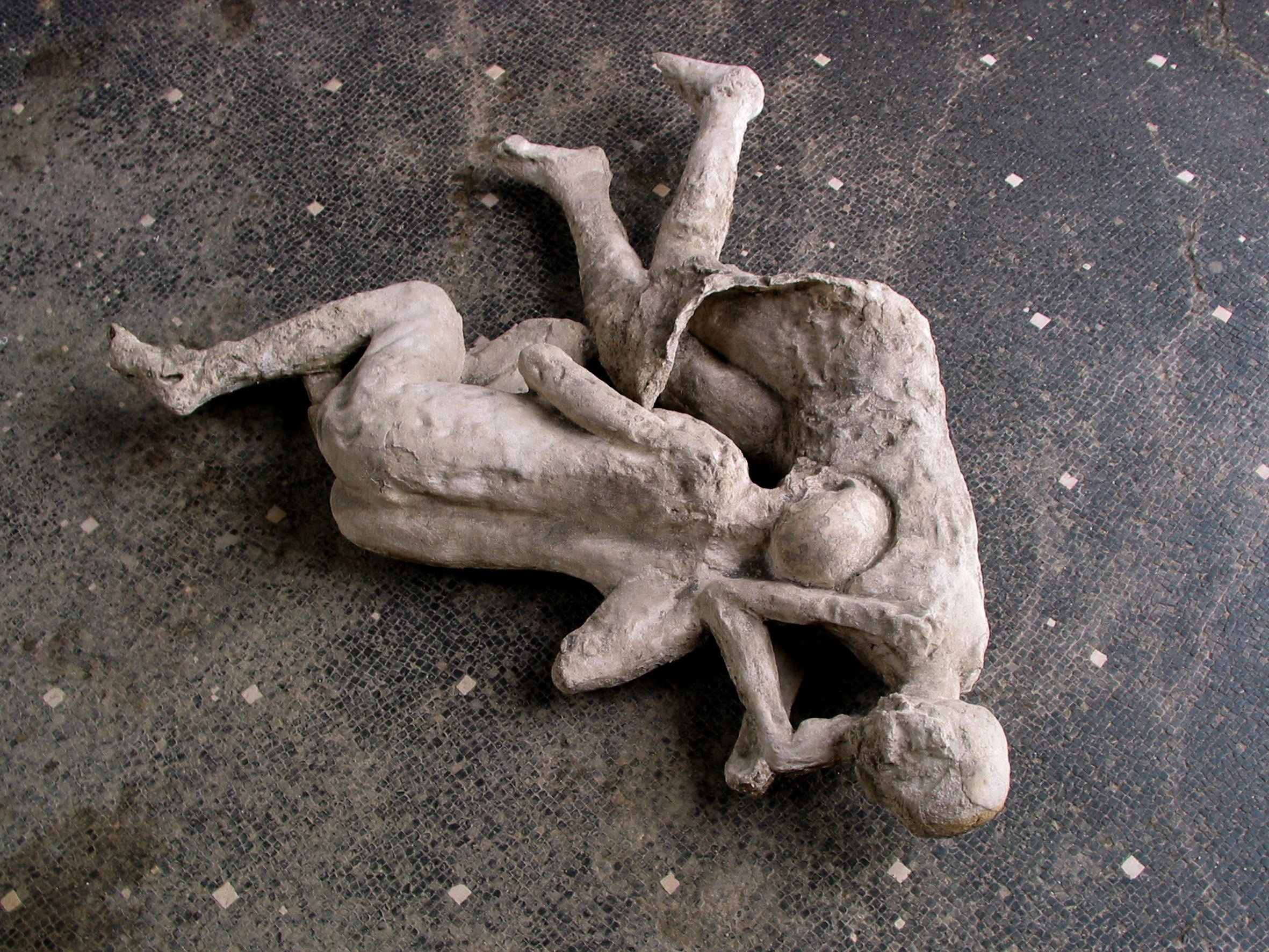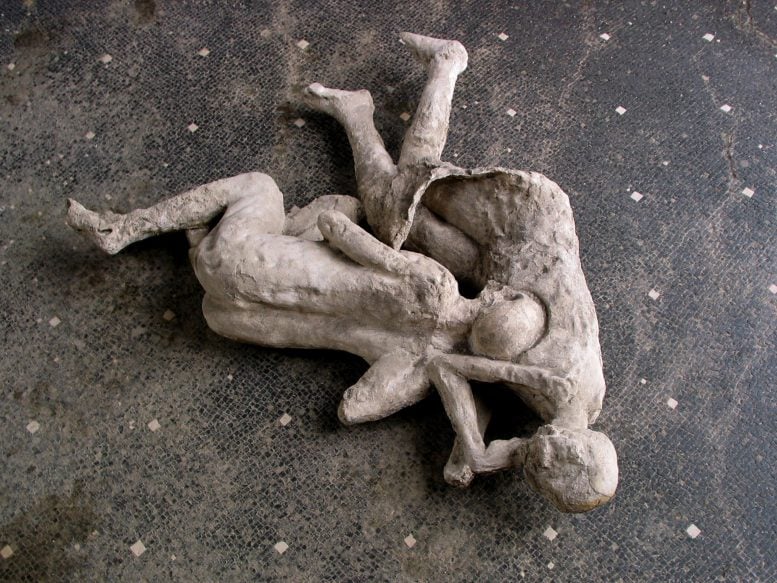

New DNA evidence from Pompeii’s body casts reveals that traditional assumptions about residents’ relationships and origins were often incorrect, showing instead a diverse population with roots in the eastern Mediterranean.
In 79 CE, the volcanic system of Somma-Vesuvius in southern Italy erupted, engulfing the Roman town of Pompeii and its inhabitants. This catastrophic event blanketed the area in ash, preserving many of the bodies and structures beneath its layers.
Now, ancient DNA collected from the famed body casts alters the history that’s been written since the once-forgotten town’s rediscovery in the 1700s. As reported on November 7, 2024, in Current Biology, the DNA evidence shows that individuals’ sexes and family relationships don’t match traditional interpretations that had been formulated largely from modern-day assumptions.
Challenging Assumptions with DNA Evidence
“The scientific data we provide do not always align with common assumptions,” says David Reich of Harvard University. “For instance, one notable example is the discovery that an adult wearing a golden bracelet and holding a child, traditionally interpreted as a mother and child, were an unrelated adult male and child. Similarly, a pair of individuals thought to be sisters, or mother and daughter, were found to include at least one genetic male. These findings challenge traditional gender and familial assumptions.”
The study team including Alissa Mittnik, also at Harvard University, and David Caramelli of the Universita di Firenze in Italy had heard the stories of Pompeii. They realized that ancient DNA and strontium isotopes used to date samples could help them understand better the diversity and origins of Pompeii’s residents. They extracted DNA from highly fragmented skeletal remains mixed with the plaster casts, focusing on 14 of 86 casts that are undergoing restoration.
The researchers’ goal was to learn as much as possible from the DNA evidence about these 14 victims. Their approach allowed them to accurately determine the genetic relationships, sex, and ancestry of those 14 individuals. What they found out was largely in contrast to long-held assumptions based solely on the physical appearance and positioning of the casts.
Insights into Pompeii’s Cosmopolitan Population
The genetic data offered insight into the Pompeiians’ ancestry, revealing that the Pompeiians had diverse genomic backgrounds. They primarily descended from recent immigrants from the eastern Mediterranean. The finding highlights the cosmopolitan nature of the Roman Empire, according to the researchers.
“Our findings have significant implications for the interpretation of archaeological data and the understanding of ancient societies,” Mittnik says. “They highlight the importance of integrating genetic data with archaeological and historical information to avoid misinterpretations based on modern assumptions. This study also underscores the diverse and cosmopolitan nature of Pompeii’s population, reflecting broader patterns of mobility and cultural exchange in the Roman Empire.”
The findings highlight the need for a multidisciplinary approach including genetic analysis to fully understand the past of Pompeii and beyond, the researchers say.
“This study illustrates how unreliable narratives based on limited evidence can be, often reflecting the worldview of the researchers at the time,” Caramelli says.
Reference: “Ancient DNA challenges prevailing interpretations of the Pompeii plaster casts” by Elena Pilli, Stefania Vai, Victoria C. Moses, Stefania Morelli, Martina Lari, Alessandra Modi, Maria Angela Diroma, Valeria Amoretti, Gabriel Zuchtriegel, Massimo Osanna, Douglas J. Kennett, Richard J. George, John Krigbaum, Nadin Rohland, Swapan Mallick, David Caramelli, David Reich and Alissa Mittnik, 7 November 2024, Current Biology.
DOI: 10.1016/j.cub.2024.10.007

